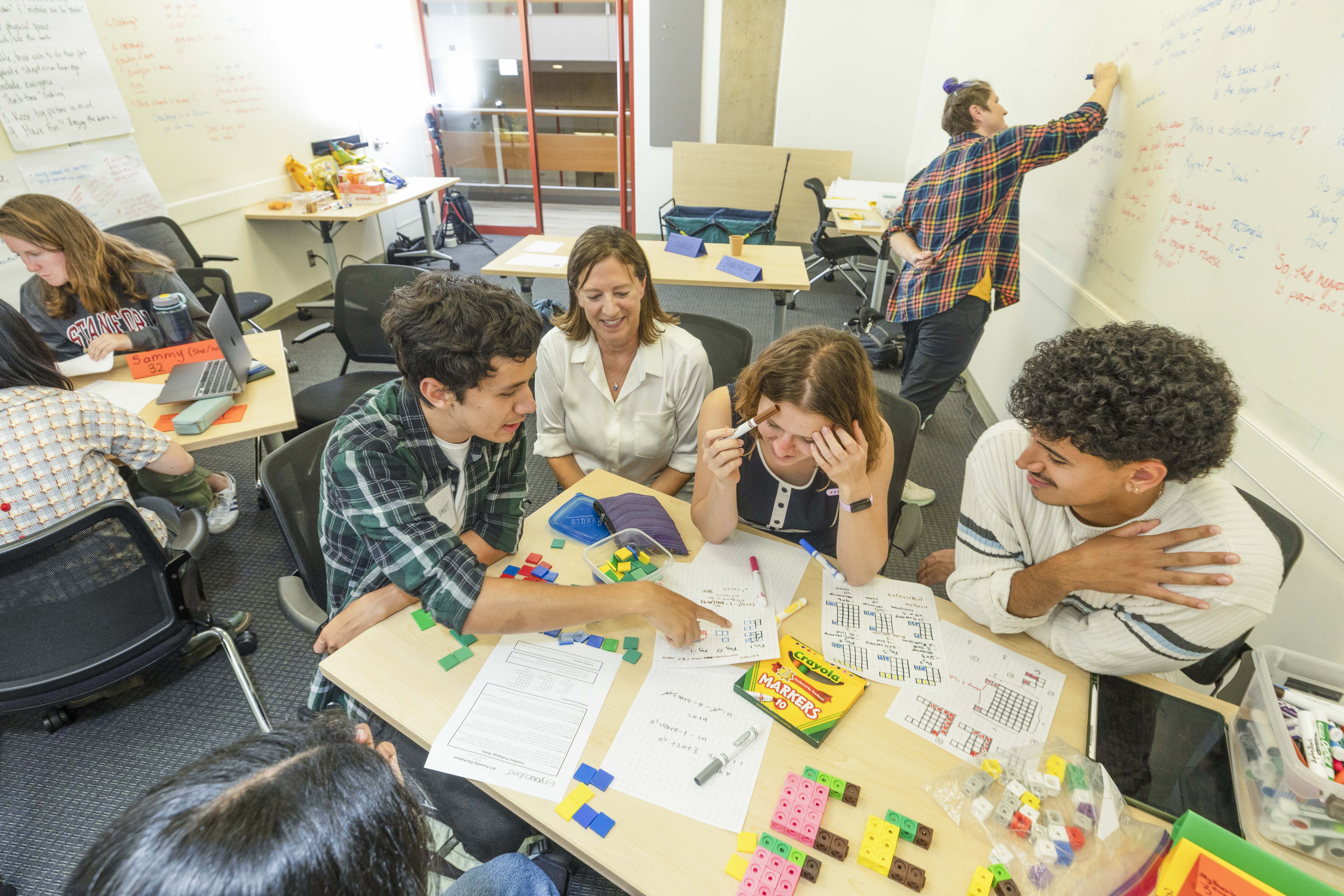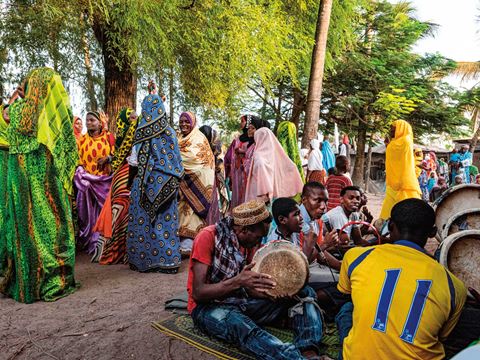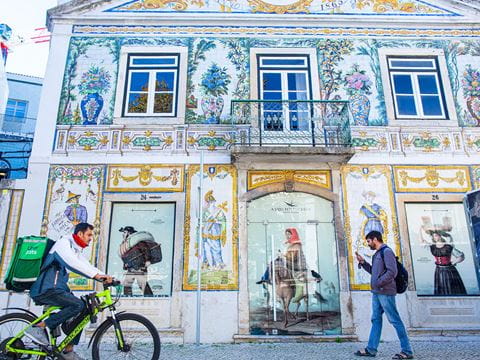
How To Improve Student Confidence Through Seeing Math Differently
For the Teacher's Desk
Written by Lauren Barack and Photographed by Todd Rafalovich
Jo Boaler remembers when math first made sense—not in a classroom but in her living room outside Birmingham, England. She was 5 years old, and her mother brought home a set of Cuisenaire rods: colorful wooden blocks of varying lengths, used to teach arithmetic. But to Boaler, they meant something more. She began to see math not as symbols on a page but as a physical, visual experience—something you could touch, arrange and explore.
“They were my toy,” Boaler says. “My entrée into visual math started early.”
Traditional math instruction often relies on rigid methods, leaving students convinced they’re not good at the subject. Visual approaches offer a different path—one that encourages discovery, creativity and confidence. Now a professor at Stanford University and cofounder of the math education resource YouCubed, Boaler champions strategies beyond worksheets and memorized formulas to help students truly see how math works.
Tiling the Plane and Opening Minds
A new AramcoWorld Learning Center lesson brings that approach into classrooms through the art of tessellation. Based on the article “Escher + Alhambra = Infinity,” the lesson explains how repeated shapes can cover a surface with no gaps or overlaps—much like the intricate work of artist M. C. Escher’s signature designs. Students begin by analyzing how identical shapes can create optical illusions. In the lesson's 30-minute activity, they explore interlocking patterns and geometric ideas like infinity and hyperbolic space. Its visual analysis activity invites them to design their own tessellation.
By blending artistic creativity with geometric reasoning, the lesson encourages students to think spatially and visually while gaining hands-on experience with symmetry, transformation and pattern.

“Every form of evidence points to making maths a visual subject.”
Escher, Geometry and the Alhambra
Escher’s work with Islamic tile—particularly at the Alhambra palace in Spain—helped shape his approach to math through art. His studies of pattern, symmetry and space provide the foundation for the Learning Center lesson.
“Escher may have denied he was a mathematician,” says Doris Schattschneider, professor emerita of mathematics at Moravian University in Bethlehem, Pennsylvania. But his investigation into the geometric rules of tessellations made him a mathematician, and classes should be encouraged to adopt his mathematical mindset “as so many things can link to math.”
Escher visited the Alhambra in the 1920s and 1930s, sketching the ornamental tiles embedded throughout the palace. These motifs sparked his explorations of tessellation. “These tiles, and they don't have to be the same, they don't have to be polygons, but they fit together to cover the plane with no gaps and no overlaps,” Schattschneider says.
In the Learning Center lesson, students use a similar process. They cut and trace squares from card stock, modify the edges to form interlocking shapes and explore how patterns repeat seamlessly. Activities emphasize rotational symmetry and congruence—the kinds of spatial reasoning behind Escher’s illusions.
Schattschneider also recalls a tessellation lesson she once gave seventh graders, who used graph paper to connect vertices with curves, then filled the page with patterns. The result? Original, complex tessellations—and a deeper understanding of math through design.

“These tiles, and they don't all have to be the same, they don't have to be polygons, but they fit together to cover the plane with no gaps and no overlaps.”
Visual Strategies That Stick
Boaler believes visual learning does more than improve engagement. It transforms how students understand mathematical thinking. In one of her classroom activities, she shows students a series of pyramids made of stacked tiles, each larger than the last. Rather than solve a formula, she asks students: What do you see?
Students invent their own methods for describing the growth: the Volcano Method, where pyramids build from a center crater; and the Bowling Method, where new rows stack at the base “like a row of Skittles,” Boaler says.
Critically, no one is told they’re right or wrong. While the pyramids grow at an algebraic rate of (n+1)2, the exercise focuses on pattern recognition and observation—not memorization.
Boaler mentions scientists have found visual pathways of mathematicians' brains are more developed than those of other academics. Further, a 2019 paper, “The Brain-Structural Correlates of Mathematical Expertise,” found mathematicians “show better visuospatial abilities” as compared to non-mathematicians.
Engaging those pathways underpins YouCubed, which offers printable visual math activities like the pyramidal task. “Every form of evidence points to making maths a visual subject,” she says.

“Students are getting both excited about geometry and the visual arts simultaneously instead of learning geometry like spinach.”
From Visual Math to Project-Based Learning
Visual methods align naturally with project-based learning (PBL), where students apply their knowledge in open-ended, real-world ways. The Learning Center’s lesson encourages just that. In the 30-minute activity, students analyze artwork for mathematical structure and illusion, create their own tessellations and reflect on how their understanding evolved.
Bob Lenz, the CEO of PBL Works, says that kind of approach can transform math instruction. In one project, students proposed a new product for a Boston grocery store, calculating cost and profit while crafting a persuasive pitch. “Students are getting both excited about geometry and the visual arts simultaneously instead of learning geometry like spinach,” Lenz says.
In another, students in Marin, California, examined patterns in nature, like honeycomb shapes, then linked those to local architecture—such as the Marin Civic Center, designed by Frank Lloyd Wright.
Lenz suggests Escher’s work could also inspire a group project. Students might create a frieze of tessallations for a school hallway, then teach classmates about the geometric transformations behind the designs.
The Learning Center’s tessellation activities, like Boaler’s visual methods, invite students to approach math with curiosity and creativity. When they cut card stock to build repeating shapes or describe pyramid growth in their own language, they experience math as a way of seeing—not just solving.
And when students begin to see, they begin to believe. “Math is a subject you can see in different ways,” Boaler says. The possibilities and answers are infinite.
Other lessons

Taarab Music: Exploring the History and Cultural Impact in Zanzibar
Art
History
East Africa
Explore taarab’s cultural roots, sound and instruments—then compare its emotional and social impact to music in your own life..jpg?cx=0.31&cy=0.53&cw=480&ch=360)
Building Bridges in the Classroom: The Stari Most Story for Teaching Writing and Cultural History
For the Teacher's Desk
Teach students how to uncover details through metaphor telling the story of their communities.
Tracing the History and Geography of Portuguese Tilemaking
Geography
Architecture
Europe
Analyze how culture and technology have changed the ways tiles have been made in Portugal for over 500 years.